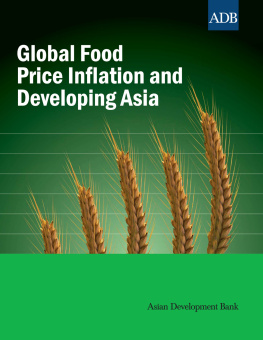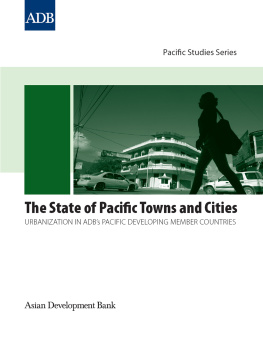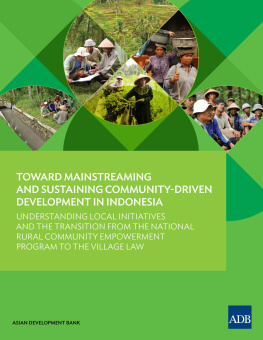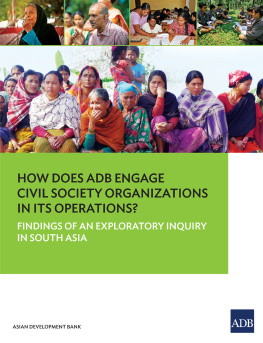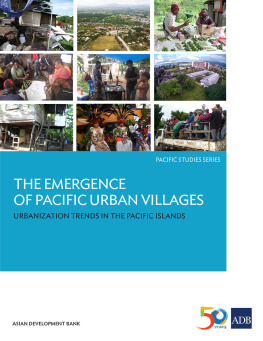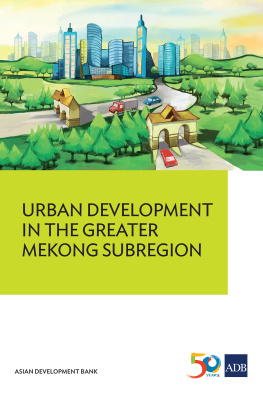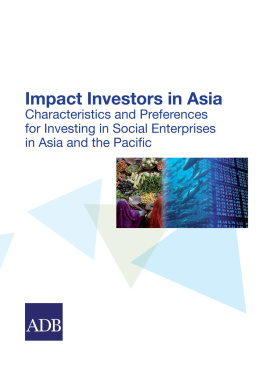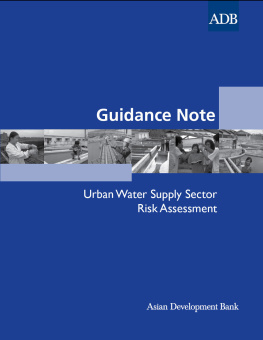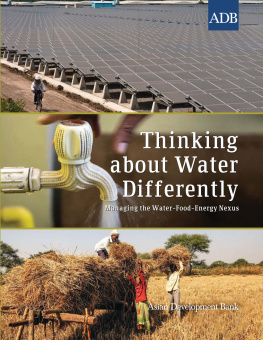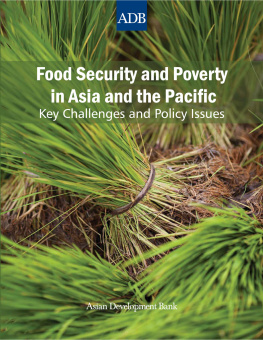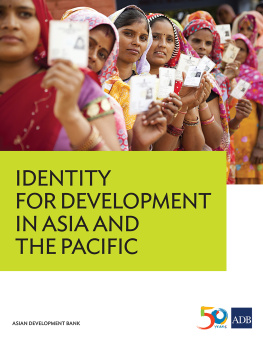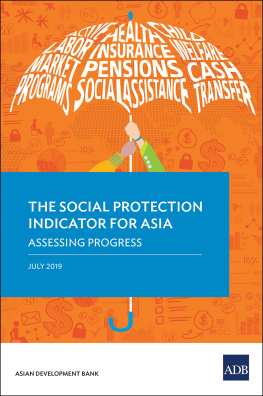Asian Development Bank - Global Food Price Inflation and Developing Asia
Here you can read online Asian Development Bank - Global Food Price Inflation and Developing Asia full text of the book (entire story) in english for free. Download pdf and epub, get meaning, cover and reviews about this ebook. year: 2011, publisher: Asian Development Bank, genre: Business. Description of the work, (preface) as well as reviews are available. Best literature library LitArk.com created for fans of good reading and offers a wide selection of genres:
Romance novel
Science fiction
Adventure
Detective
Science
History
Home and family
Prose
Art
Politics
Computer
Non-fiction
Religion
Business
Children
Humor
Choose a favorite category and find really read worthwhile books. Enjoy immersion in the world of imagination, feel the emotions of the characters or learn something new for yourself, make an fascinating discovery.
- Book:Global Food Price Inflation and Developing Asia
- Author:
- Publisher:Asian Development Bank
- Genre:
- Year:2011
- Rating:3 / 5
- Favourites:Add to favourites
- Your mark:
- 60
- 1
- 2
- 3
- 4
- 5
Global Food Price Inflation and Developing Asia: summary, description and annotation
We offer to read an annotation, description, summary or preface (depends on what the author of the book "Global Food Price Inflation and Developing Asia" wrote himself). If you haven't found the necessary information about the book — write in the comments, we will try to find it.
Global Food Price Inflation and Developing Asia — read online for free the complete book (whole text) full work
Below is the text of the book, divided by pages. System saving the place of the last page read, allows you to conveniently read the book "Global Food Price Inflation and Developing Asia" online for free, without having to search again every time where you left off. Put a bookmark, and you can go to the page where you finished reading at any time.
Font size:
Interval:
Bookmark:

Price Inflation and
Developing Asia
List of Tables and Figures | |
Abstract | |
Introduction | |
Causes of High Food Prices | |
Transmission of Global Food Prices to Domestic Prices | |
Food Price Near-Term Outlook | |
Effects of High and Rising Commodity Prices | |
Impact on Gross Domestic Product Growth | |
Impact on Poverty | |
Policies for Enhancing Food Security | |
Short-Term Policy Responses | |
Long-Term Policy Challenges | |
Conclusion | |
References | |
Appendixes | |
Impact of Food Price Increases on Poverty for 25 Developing Asian Countries | |
National Policies to Address Rising Food Prices |
| Tables | |
| 1 | Major Extreme Weather Events between June and December 2010 |
| 2 | Food Weights in Consumer Price Index |
| 3 | Impact of Domestic Food Price Increase on Poverty for Developing Asia |
| 4 | Summary of National Measures to Address Rising Food Prices |
| Figures | |
| 1 | Commodity Price Indices, January 2006February 2011 |
| 2 | Sources of Food Price Increases, January 2007February 2011 |
| 3 | International Rice and Wheat Prices, January 2006February 2011 |
| 4 | Stock-to-Use Ratios of Selected Grains |
| 5 | Increase in Domestic Retail Prices of Rice since June 2010 |
| 6 | Increase in Domestic Retail Prices of Wheat since June 2010 |
| 7a | Contributions to CPI Inflation, JanuaryJune 2010 |
| 7b | Contributions to CPI Inflation, July 2010latest |
| 8 | Changes in GDP Growth Rates due to a 30% Increase in Global Food Prices in 2011 |
| 9 | Changes in GDP Growth Rates due to a Combined 30% Increase in Global |
| Food and Oil Prices in 2011 | |
| 10 | Yields for Top 10 Global Rice Producers |
| 11 | Yields for Top 10 Global Wheat Producers |
Font size:
Interval:
Bookmark:
Similar books «Global Food Price Inflation and Developing Asia»
Look at similar books to Global Food Price Inflation and Developing Asia. We have selected literature similar in name and meaning in the hope of providing readers with more options to find new, interesting, not yet read works.
Discussion, reviews of the book Global Food Price Inflation and Developing Asia and just readers' own opinions. Leave your comments, write what you think about the work, its meaning or the main characters. Specify what exactly you liked and what you didn't like, and why you think so.

